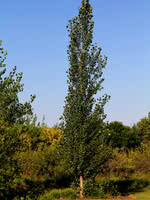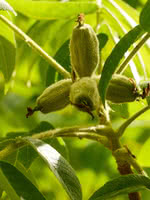Mon-Fri 9am - 5pm Mountain time
Sundancer Poplar vs Butternut (White Walnut)
Populus x ACWS151
Juglans cinerea
The Sundancer Poplar is a fast-growing, columnar hybrid that is resistant to Bronze Leaf Disease. Developed at the Agroforestry Centre in Indian Head, Saskatchewan, this cold hardy tree is well-suited to the Canadian prairies and northern regions.
Adaptable to various soil conditions and drought-tolerant once established, the Sundancer Poplar is an excellent choice for lining properties and roads or creating an attractive hedge.
Butternut is one of the few walnut varieties native to Canada. The nuts are sought after for their mild, sweet, and oily taste. Ensure this tree is planted in full sun and well-drained soil for best results.
Butternut is self-fertile but it has better yields when planted near other butternuts. It can survive in zone 2, but reliably produces nuts in zone 3.
A top CO2 absorbing species. Experts think this tree may help climate change more than others.

